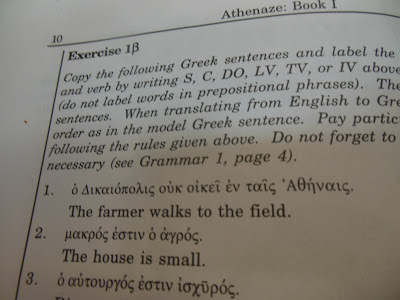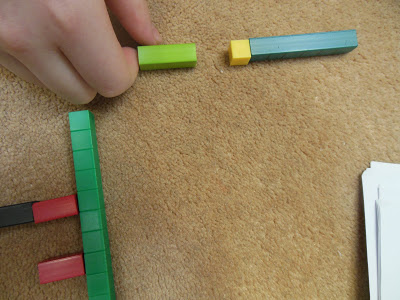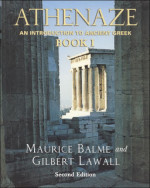Teaching grammar visually to visual-spatial learners can make the learning process a bit easier. I had been working on a difficult grammatical concept with my visual-spatial learner in our foreign language curriculum recently and he wasn’t really connecting with the concept. When I pulled out the cuisenaire rods and used them to represent the parts of speech he had a much easier time understanding and remembering the concepts.
Here is the exercise we were doing from Athenaze 1:
We started with the English sentence. He had to identify the subject, the verb (transitive, intransitive, or linking), and whether there was a direct object or complement.
Here is what we used to work through the exercises. The dark green (in his hand) cuisenaire rod is the subject. The long vertical green bar separates the subject from the predicate. He had to choose if the sentence had a intransitive verb (little red one alone), transitive verb (little red one with black direct object), or a linking verb (little yellow one with a light green complement) by placing the subject bar next to the right sentence pattern. Using the rods helped him visualize and remember the parts of speech.
Once we moved to the Greek sentence I had him read it and translate it into English and find the correct sentence like he did with the English ones. Once he had done that correctly, I had him take the parts of speech in the sentence and put them together in the order they occur in the Greek sentence.
I will definitely be incorporating more cuisenaire rods into our foreign language grammar studies.








